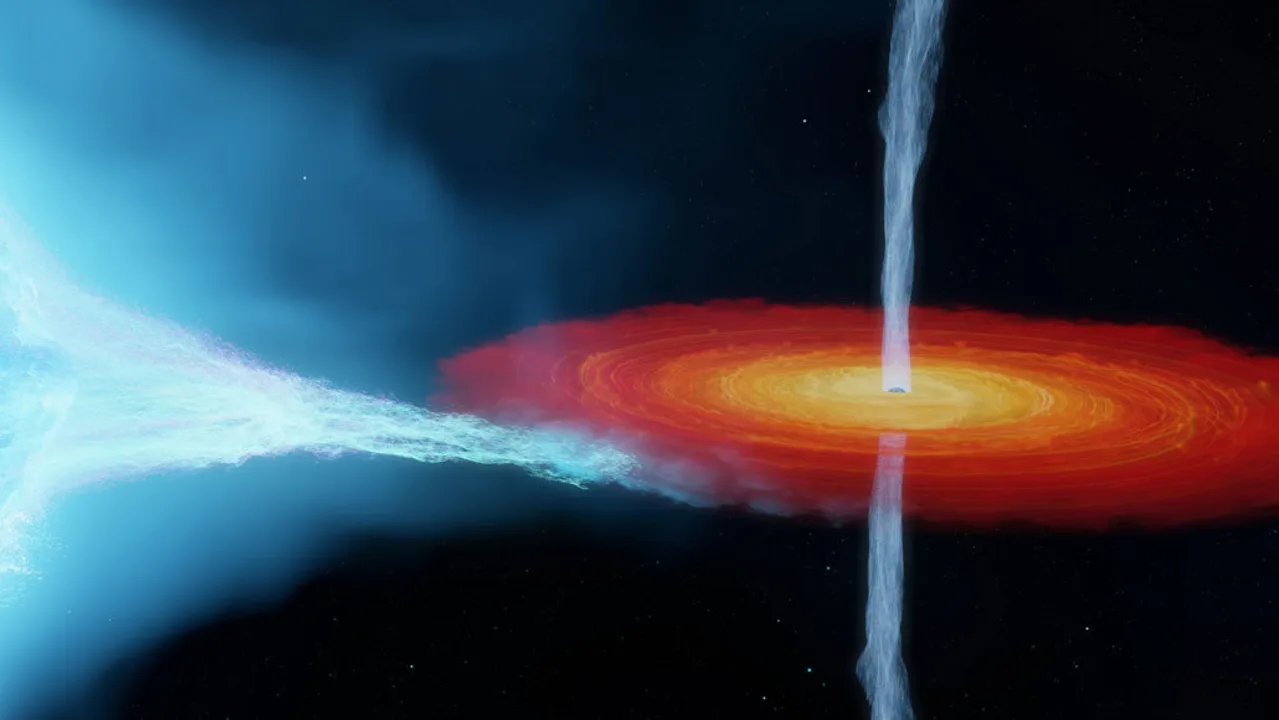Apr 14, 2023, Posted by: Kendall Harlow

Uncovering the Mystery of Black Holes: Exploring What They Are and Who Discovered Them
Black holes are one of the most mysterious and awe-inspiring phenomena in the universe. They are incredibly dense regions of space-time, formed by the collapse of massive stars, where gravity is so strong that not even light can escape its grasp. While they have been the subject of much speculation and conjecture throughout history, it wasn't until the late twentieth century that we began to understand what black holes truly were and how they work.
So, what is a black hole? In simplest terms, it is a region of space-time where gravity is so strong that light cannot escape its grasp. This creates an area of complete darkness, where not even the light of stars can escape. This effect is known as an event horizon, and it creates a point of no return for anything that enters it. The gravity of a black hole is so strong that it can even affect the orbits of stars and planets nearby.
Black holes are incredibly difficult to observe directly, as they can't be seen with optical telescopes. However, their presence can be inferred from the effects they have on the surrounding space-time. For instance, when a black hole is close to a star, it can cause distortions in the star's light that can be observed from Earth. It's also possible to observe the jets of material that are shot out from the accretion disk of a black hole, which can be seen as bright X-ray sources.
So, who discovered the black holes? The first person to suggest the existence of black holes was British astronomer John Michell in 1783. However, it wasn't until the early twentieth century that the concept of a black hole was truly accepted by the scientific community. It was in the 1960s that the first convincing evidence of their existence was discovered, through the observations of stars orbiting around a mysterious object at the center of the Milky Way galaxy. This object was later identified as a supermassive black hole.
Since then, our understanding of black holes has grown exponentially, and today we know that they come in a variety of sizes and masses. There are stellar-mass black holes, which are formed from the collapse of massive stars, and supermassive black holes, which are found at the centers of most galaxies. In addition, there are also intermediate-mass black holes, which are believed to be the stepping stones between the two.
In summary, black holes are incredibly dense regions of space-time, formed by the collapse of massive stars, where gravity is so strong that not even light can escape. While they were first suggested by John Michell in 1783, it wasn't until the 1960s that we had convincing evidence of their existence. Since then, our understanding of black holes has grown significantly, and we now know that they come in a variety of sizes and masses.
A Closer Look at Black Holes: Unveiling the History of their Discovery and What They Are
Black holes have been the subject of fascination for centuries, but it wasn't until the early 20th century that astronomers first started to develop theories about these mysterious objects. In 1915, Albert Einstein proposed his theory of general relativity, which described the behavior of matter in extreme gravitational fields. This new theory provided the foundation for our understanding of black holes.
The term 'black hole' was first coined by American physicist John Wheeler in 1967. At the time, scientists had already begun to understand the basics of black hole physics, but it wasn't until the 1970s that the first black hole was actually observed. This was done by using a special type of telescope called a radio telescope, which was able to detect the extreme gravitational effects of the black hole.
So, what exactly is a black hole? In simple terms, a black hole is a region of spacetime where the gravitational force is strong enough to prevent anything - even light - from escaping. As matter and energy are pulled into a black hole, the gravitational force increases, creating a point of singularity where the laws of physics break down. This is why black holes are so mysterious and fascinating.
Today, scientists have discovered thousands of black holes, and they continue to be an important area of research for astronomers. In addition to understanding the physics behind black holes, researchers are also studying their impact on the universe. For example, supermassive black holes are believed to be at the center of most galaxies, and they are thought to be the engine that drives the formation of new stars and planets.
Black holes remain one of the greatest mysteries of the universe. While we may never fully understand them, they continue to captivate the imagination and inspire further study. The history of their discovery and the science behind them is fascinating, and each new discovery brings us closer to understanding these enigmatic objects.
Author
Kendall Harlow
I am an avid traveler, always looking for the next adventure. I enjoy exploring new cultures and learning about different ways of life. I'm never afraid to take a risk in order to experience something new.